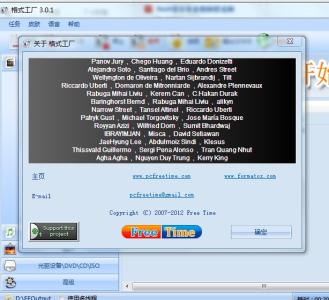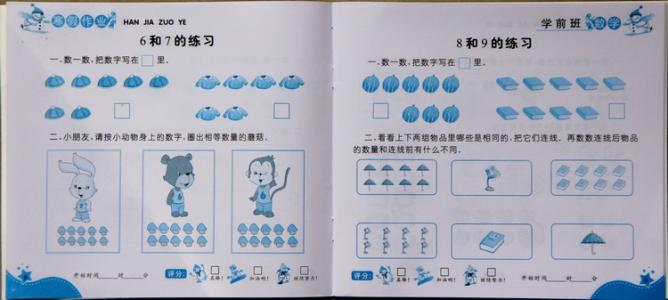Most articles about Garbage Collection ignore the fact that the Sun Hotspot JVM is not the only game in town. In fact whenever you have to work with either IBM WebSphere or Oracle WebLogic you will run on a different runtime. While the concept of Garbage Collection is the same, the implementation is not and neither are the default settings or how to tune it. This often leads to unexpected problems when running the first load tests or in the worst case when going live. So let’s look at the different JVMs, what makes them unique and how to ensure that Garbage Collection is running smooth.
The Garbage Collection ergonomics of the Sun Hotspot JVMEverybody believes to know how Garbage Collection works in the Sun Hotspot JVM, but lets take a closer look for the purpose of reference.
The memory model of the Sun Hotspot JVM
The Generational HeapThe Hotspot JVM is always using a Generational Heap. Objects are first allocated in the young generation, specifically in the Eden area. Whenever the Eden space is full a young generation garbage collection is triggered. This will copy the few remaining live objects into the empty survivor space. In addition objects that have been copied to Survivor in the previous garbage collection will be checked and the live ones will be copied as well. The result is that objects only exist in one survivor, while eden and the other survivor is empty. This form of Garbage Collection is called copy collection. It isfast as long as nearly all objects have died. In addition allocation is always fast because no fragmentation occurs. Objects that survive a couple of garbage collections are considered old and are promoted into the Tenured/Old space.
Tenured Generation GCsThe Mark and Sweep algorithms used in the Tenured space are different because they do not copy objects. As we have seen in one of my previous posts garbage collection takes longer the more objects are alive. Consequently GC runs in tenured are nearly always expensive which is why we want to avoid them. In order to avoid GCs we need to ensure that objects are only copied from Young to Old when they are permanent and in addition ensure that the tenured does not run full. Therefore generation sizing is the single most important optimization for the GC in the Hotspot JVM. If we cannot prevent objects from being copied to Tenured space once in a while we can use the Concurrent Mark and Sweep algorithm which collects objects concurrent to the application.
Comparison of the different Garbage Collector Strategies

While that shortens the suspensions it does not prevent them and they will occur more frequently. The Tenured space also suffers from another problem, fragmentation. Fragmentation leads to slower allocation, longer sweep phases and eventually out of memory errors when the holes get too small for big objects.
Java Heap before and after compacting
This is remedied by a compacting phase. The serial and parallel compacting GC perform compaction for every GC run in the Tenured space. Important to note is that, while the parallel GC performs compacting every time, it does not compact the whole Tenured heap but just the area that is worth the effort. Worth the effort means when the heap has reached a certain level of fragmentation. In contrast, the Concurrent Mark and Sweep does not compact at all. Once objects cannot be allocated anymore a serial major GC is triggered. When choosing the concurrent mark and sweep strategy we have to be aware of that side affect.
The second big tuning option is therefore the choice of the right GC strategy. It has big implications for the impact the GC has on the application performance. The last and least known tuning option is around fragmentation and compacting. The Hotspot JVM does not provide a lot of options to tune it, so the only way is to tune the code directly and reduce the number of allocations.
There is another space in the Hotspot JVM that we all came to love over the years, the Permanent Generation. It holds classes and string constants that are part of those classes. While Garbage Collection is executed in the permanent generation, it only happens during a major GC. You might want to read up what a Major GC actually is, as it does not mean a Old Generation GC. Because a major GC does not happen often and mostly nothing happens in the permanent generation, many people think that the Hotspot JVM does not do garbage collection there at all.
Over the years all of us run into many different forms of the OutOfMemory situations in PermGen and you will be happy to hear that Oracle intends to do away with it in the future versions of Hotspot.
Oracle JRockitNow that we had a look at Hotspot, let us look at the difference in the Oracle JRockit. JRockit is used by Oracle WebLogic Server and Oracle has announced that it will merge it with the Hotspot JVM in the future.
Heap StrategyThe biggest difference is the heap strategy itself. While Oracle JRockit does have a generational heap it also supports a so called continuous heap. In addition the generational heap looks different as well.
Heap of the Oracle JRockit JVM
The Young space is called Nursery and it only has two areas. When objects are first allocated they are placed in a so called Keep Area. Objects in the Keep Area are not considered during garbage collection while all other objects still alive are immediately promoted to tenured. That has major implications for the sizing of the Nursery. While you can configure how often objects are copied between the two survivors in the Hotspot JVM, JRockit promotes objects in the second Young Generation GC.
In addition to this difference JRockit also supports a completely continuous Heap that does not distinguish between young and old objects. In certain situations, like throughput orientated batch jobs, this results in better overall performance. The problem is that this is the default setting on a server JVM and often not the right choice. A typical Web Application is not throughput but response time orientated and you will need to explicitly choose the low pause time garbage collection mode or a generational garbage collection strategy.
Mostly Concurrent Mark and SweepIf you choose Concurrent Mark and Sweep strategy you should be aware about a couple of differences here as well. The mostly concurrent mark phase is divided into four parts:
Initial marking, where the root set of live objects is identified. This is done while the Java threads are paused.Concurrent marking, where the references from the root set are followed in order to find and mark the rest of the live objects in the heap. This is done while the Java threads are running.Precleaning, where changes in the heap during the concurrent mark phase are identified and any additional live objects are found and marked. This is done while the Java threads are running.Final marking, where changes during the precleaning phase are identified and any additional live objects are found and marked. This is done while the Java threads are paused.The sweeping is also done concurrent to your application, but in contrast to Hotspot in two separate steps. It is first sweeping the first half of the heap. During this phase threads are allowed to allocate objects in the second half. After a short synchronization pause the second half is sweeped. This is followed by another short final synchronization pause. The JRockit algorithm therefore stops more often than the Sun Hotspot JVM, but the remark phase should be shorter. Unlike the Hotspot JVM you can tune the CMS by defining the percentage of free memory that triggers a GC run.
CompactingThe JRockit does compacting for all Tenured Generation GCs, including the Concurrent Mark and Sweep. It does so in an incremental mode for portions of the heap. You can tune this with various options like percentage of heap that should be compacted each time or how many objects are compacted at max. In addition you can turn off compacting completely or force a full one for every GC. This means that compacting is a lot more tunable in the JRockit than in the Hotspot JVM and the optimum depends very much on the application itself and needs to be carefully tested.
Thread Local AllocationHotspot does use thread local allocation, but it is hard to find anything in the documentation about it or how to tune it. The JRockit uses this on default. This allows threads to allocate objects without any need for synchronization, which is beneficial for allocation speed. The size of a TLA can be configured and a large TLA can be beneficial for applications where multiple threads allocate a lot of objects. On the other hand a too large TLA can lead to more fragmentation. As a TLA is used exclusively by one thread, the size is naturally limited by the number of threads. Thus both decreasing and increasing the default can be good or bad depending on your applications architecture.
Large and small objectsThe JRockit differentiates between large and small objects during allocation. The limit for when an object is considered large depends on the JVM version, the heap size, the garbage collection strategy and the platform used. It is usually somewhere between 2 and 128 KB. Large objects are allocated outside thread local area in in case of a generational heap directly in the old generation. This makes a lot of sense when you start thinking about it. The young generation uses a copy ccollection. At some point copying an object becomes more expensive than traversing it in ever garbage collection.
No permanent GenerationAnd finally it needs to be noted that the JRockit does not have a permanent generation. All classes and string constants are allocated within the normal heap area. While that makes life easier on the configuration front it means that classes can be garbage collected immediately if not used anymore. In one of my future posts I will illustrate how this can lead to some hard to find performance problems.
The IBM JVMThe IBM JVM shares a lot of characteristics with JRockit: The default heap is a continuous one. Especially in WebSphere installation this is often the initial cause for bad performance. It differentiates between large and small objects with the same implications and uses thread local allocation on default. It also does not have a permanent generation, but while the IBM JVM also supports a generational Heap model it looks more like Sun’s rather than JRockit.
The IBM JVM generational heap
Allocate and Survivor act like Eden and Survivor of the Sun JVM. New objects are allocated in one area and copied to the other on garbage collection. In contrast to JRockit the two areas are switched upon gc. This means that an object is copied multiple times between the two areas before it gets promoted to Tenured. Like JRockit the IBM JVM has more options to tune the compaction phase. You can turn it off or force it to happen for every GC. In contrast to JRockit the default triggers it due to a series of triggers but will then lead to a full compaction. This can be changed to an incremental one via a configuration flag.
ConclusionWe see that while the three JVMs are essentially trying to achieve the same goal, they do so via different strategies. This leads to different behaviour that needs tuning. With Java 7 Oracle will finally declare the G1 (Garbage First) production ready and the G1 is a different beast altogether, so stay tuned.
If you’re interested in hearing me discuss more about WebSphere in a production environment, then check out our upcoming webinar with The Bon-Ton Stores. I’ll be joined by Dan Gerard, VP of Technical & Web Services at Bon-Ton, to discuss the challenges they’ve overcome in operating a complex Websphere production eCommerce site to deliver great web application performance and user experience.Reserve your seat today to hear me go into more detail about Websphere and production eCommerce environments.
 爱华网
爱华网



